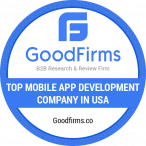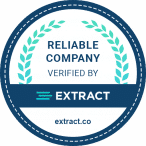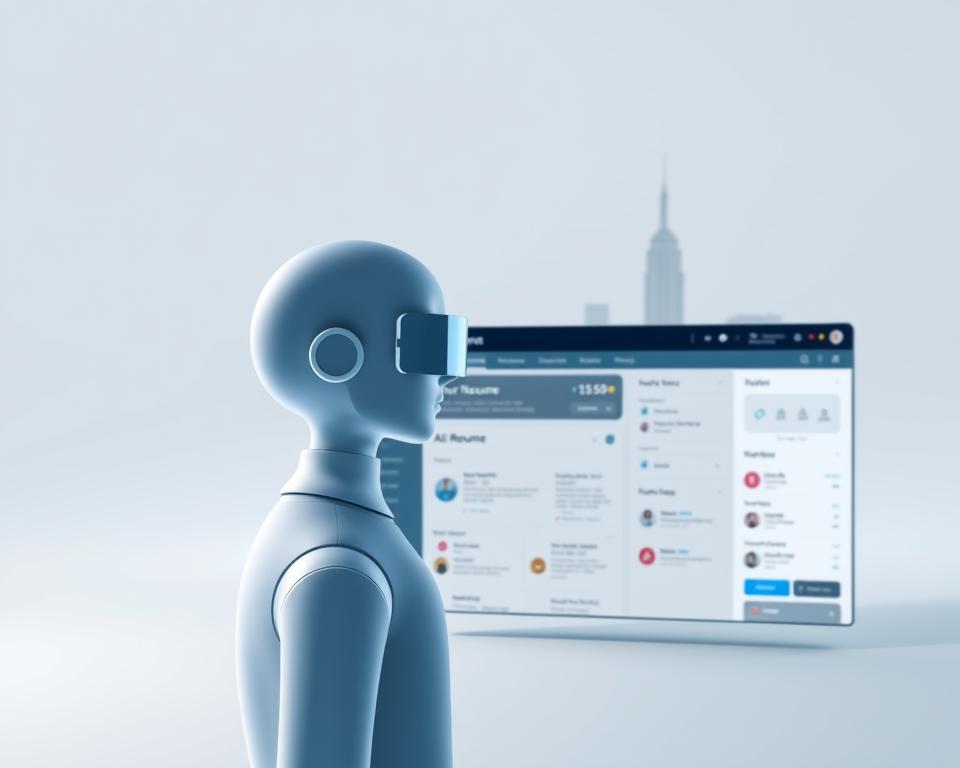An AI-powered resume builder and job search app can give you an edge in the job market. To build such an app, you need to know a lot about artificial intelligence, machine learning, and software development. This article will guide you through the process, covering what you need to know and the key technologies involved.
There’s a big need for smart job search tools today. An AI-powered resume builder and job search app can help. They use artificial intelligence and machine learning to make resumes better and find jobs that match your skills.
With the right help, developers can make an AI-powered resume builder and job search app. This article will show you how to plan, build, and deploy such an app. It will cover everything from the start to the end.
Table of Contents
Introduction to AI-Powered Resume Builders
An AI-powered resume builder and job search app can make finding a job easier. They use natural language processing and machine learning to match you with jobs. This way, they give you job recommendations that fit your skills and experience.
Key Takeaways
- Building an AI-powered resume builder and job search app requires expertise in AI, machine learning, and software development
- An AI-powered resume builder and job search app can provide a competitive edge in the job market
- These apps utilize natural language processing and machine learning algorithms to analyze resumes and job descriptions
- The increasing demand for smart job search tools has led to a growing need for innovative solutions like an AI-powered resume builder and job search app
- Developers can create an AI-powered resume builder and job search app that meets the needs of modern job seekers with the right guidance
- An AI-powered resume builder and job search app can help job seekers create effective resumes and match with relevant job openings
Understanding the Power of AI in Modern Job Search
The job search world has changed a lot lately, thanks to artificial intelligence and machine learning. AI now helps job seekers make resumes that fit the jobs they want. This resume building evolution has led to better tools that give feedback on your resume.
As more people look for smart job search tools, it’s key to know how AI helps. AI tools offer:
- Personalized resume building and feedback
- Job matching algorithms that consider skills, experience, and preferences
- Real-time job market analytics and insights
AI has changed how we look for jobs. With smart job search tools, job seekers can work on skills that employers want. This makes them more likely to find a job. As the job search world keeps changing, AI will keep being a big part of finding jobs.
Essential Prerequisites for Development
Before starting to build an AI-powered resume builder and job search app, it’s key to know the development prerequisites. You need to be good at programming languages like Python, Java, or JavaScript. Also, having experience with machine learning frameworks like TensorFlow or PyTorch is important.
Knowing how to manage databases and data structures is crucial for AI-powered app development. The team should also know how to use cloud-based services like AWS or Google Cloud. This ensures the app can grow and stay reliable.
Here are some important development prerequisites to keep in mind:
- Programming languages: Python, Java, JavaScript
- Machine learning frameworks: TensorFlow, PyTorch
- Database management systems: relational databases, NoSQL databases
- Cloud-based services: AWS, Google Cloud
By knowing these development prerequisites, developers can make a strong and effective AI-powered resume builder and job search app. This app will help job seekers and employers alike.
Core Technologies and Framework Selection
Building an AI-powered resume builder and job search app requires careful tech choices. The right AI models depend on the app’s needs, like natural language or computer vision. A strong backend technology stack is key, including a database, scalable servers, and secure login systems.
Choosing the right frontend frameworks is also vital for a good user experience. Frameworks like React, Angular, or Vue.js help make the app user-friendly and fast. When picking a frontend framework, consider:
- How well it works with the backend
- Its scalability and performance
- Security features
- How fast and easy it is to develop with
By carefully picking the right tech, developers can make a powerful AI resume builder and job search app. This app will meet user needs well.
Setting Up Your Development Environment
To start building an AI-powered resume builder and job search app, you need a good development environment. This means installing software and tools like IDEs, code editors, and version control systems. A well-organized environment makes your work more efficient and productive, especially for complex AI projects.
When setting up your environment, make sure it’s secure, scalable, and easy to maintain. Use strong security, cloud services for growth, and regular updates. This way, you can focus on making a top-notch AI app without worrying about the tech behind it.
- Choosing the right IDE and code editor for your project
- Setting up a version control system for tracking changes and teamwork
- Ensuring your environment works well with your chosen AI app development framework
By planning and setting up your environment well, you’re setting the stage for a successful AI-powered resume builder and job search app project.
Designing the Application Architecture
Building an AI-powered resume builder and job search app starts with a key step: designing the application architecture. This means creating a detailed plan for the system components, data flow, and how they all work together. The architecture should ensure smooth communication between the user interface, resume analysis engine, job matching algorithm, and database management system.
The system components are the foundation of the app’s architecture. They need to work together for a smooth user experience. Key components include:
- User interface: This is the app’s front-end where users interact.
- Resume analysis engine: It analyzes resumes and pulls out important info.
- Job matching algorithm: This part matches resumes with job openings based on criteria.
- Database management system: It handles data on resumes, job openings, and user info.
The data flow design is also vital. It outlines how data moves between components. A good data flow ensures data is collected, processed, and stored correctly. This can make the app more efficient and effective.
Good application architecture, system components, and data flow design are key to a successful app. By planning these elements well, developers can make an app that’s easy to use and helps users find jobs.
By focusing on application architecture, system components, and data flow, developers can build an efficient and user-friendly app. This can enhance the user experience and boost the app’s success in the market.
How to Build an AI-Powered Resume Builder & Job Search App: Step-by-Step Guide
Creating an AI-powered resume builder and job search app needs careful planning. First, outline what the app should do, like its features and how it looks. This plan is crucial to make sure the app works well for its users.
The AI-powered resume builder is a key part of the app. It should make creating resumes easy and fun. A detailed guide can help build the app, from its design to its smart resume and job matching tools.
Some important features of the app include:
- AI-powered resume builder to help users create effective resumes
- Job matching algorithm to match users with relevant job openings
- User-friendly interface to make it easy for users to navigate the app
By following this guide, developers can make a job search app that helps both job seekers and employers. This app can be a big help in today’s job market, helping users get noticed and succeed.
With the right mix of tech and design, the AI-powered resume builder and job search app can change the job search game. A step-by-step guide ensures the app is user-friendly and easy to use.
Implementing the Resume Analysis Engine
Creating an AI-powered resume builder and job search app needs a strong resume analysis engine. This engine checks resumes, gives feedback, and helps make top-notch resumes. It uses natural language processing to find important info and judge resume quality.
Natural language processing lets the engine get the real meaning of resume text. It spots key skills, qualifications, and experiences for job openings. Resume scoring algorithms also rate resumes, showing how likely they are to land a job.
- Format optimization: The engine offers tips to make resumes look better and be easier to read.
- Keyword extraction: It finds important skills and qualifications for job openings and suggests adding them to the resume.
- Grammar and spell checking: The engine looks for spelling and grammar mistakes, making sure resumes are perfect.
The resume analysis engine is a key tool for job seekers. It uses natural language processing and scoring algorithms to help make better resumes. This engine’s ability to analyze and give feedback is crucial for an AI-powered resume builder and job search app.
Developing the Job Matching Algorithm
Creating a job matching algorithm is key for an AI-powered job search app. It matches job seekers with jobs that fit their skills, experience, and preferences. The algorithm uses historical data and machine learning, like collaborative filtering or content-based filtering, to do this.
The job matching algorithm must give job seekers job recommendations that are both accurate and personal. It does this by using natural language processing and machine learning. These tools help analyze job descriptions and candidate profiles. This way, the algorithm finds the best job matches for each candidate, boosting job placement success.
Some important features of a good AI-powered job matching algorithm are:
- It can handle big datasets of job descriptions and candidate profiles.
- It uses natural language processing to pull out important info from job descriptions and candidate profiles.
- It employs machine learning models to spot patterns and connections between job descriptions and candidate profiles.
- It offers personalized job suggestions to job seekers.
With a smart job matching algorithm, AI-powered job search apps can make job hunting more efficient and effective. This leads to more user engagement, better job placement rates, and a strong edge in the job market.
Creating the User Interface
The user interface is key in making an AI-powered resume builder and job search app user-friendly. A good dashboard design should clearly show what the app can do. This makes it easy for users to find what they need without getting lost.
The resume builder interface must be simple to use. It should help users make a professional-looking resume. Features like resume templates and keyword suggestions can make this easier. This way, users can highlight their skills and get more interviews.
Some important features of a good user interface include:
- Clear and concise navigation
- Intuitive resume builder interface
- Customizable dashboard design
- Real-time feedback and suggestions
Companies should hire skilled AI developers to make the app user-friendly. This ensures users have a good experience, leading to more engagement and keeping users coming back.
In conclusion, a well-designed user interface is vital for an AI-powered resume builder and job search app. With a clear dashboard, an easy-to-use resume builder, and other key features, developers can make an app that works well for users.
Integrating External Job Boards and APIs
To help job seekers find more job openings, it’s key to link up with external job boards and APIs. This lets the app pull job listings from many places. It boosts the chances of finding the right job. The process needs API integration and secure access to these sources.
For smooth integration, hiring AI developers with API skills is helpful. They make sure the app shows the latest and most accurate job listings. This gives job seekers a better and more unified search experience.
Some important things to think about when linking up with job boards and APIs include:
- API authentication protocols to ensure secure access
- Data synchronization techniques to maintain accurate job listings
- Handling different data formats and structures from various job boards
By linking up with job boards and APIs, the app offers a full job search experience. This needs careful planning, secure access, and good data synchronization. With the right steps, the app can be a top choice for job seekers. It gives them access to lots of job openings from different external job boards.
Implementing User Authentication and Security
When making an AI-powered job search app, user authentication and security are key. They protect sensitive user info. To keep the app safe, use secure ways to check who’s logging in, like OAuth or OpenID Connect. Also, encrypting and storing data safely keeps it from wrong hands.
For a full security plan, check out resources on starting AI app development. They offer tips on the newest security steps and best ways to do things. Important points for user authentication include:
- Adding multi-factor authentication for more security
- Storing and getting back passwords safely
- Keeping software up-to-date to avoid bugs
Focus on security and user authentication to make your app safe and reliable. This makes your app trustworthy for job seekers. It also helps your app’s reputation and keeps users coming back. Always check and update your app’s security to keep up with threats and keep users’ trust.
Testing and Quality Assurance
Ensuring the quality of an AI-powered resume builder and job search app is key to its success. A series of testing and quality assurance steps are needed to make sure the app meets standards. Quality assurance is an ongoing effort, starting from development and going until the app is ready.
Testing is a big part of quality assurance. It includes unit testing, integration testing, and user acceptance testing. These steps help find and fix bugs, making sure the app is stable, works well, and is easy to use.
- Unit testing: This checks if individual parts work as they should.
- Integration testing: It makes sure different parts work well together.
- User acceptance testing: This checks if the app is easy to use and meets standards.
By using these testing methods, developers can make sure their app is top-notch, reliable, and meets user needs. Regular testing and quality assurance help find and fix problems early. This reduces errors and makes the app better for users.
Deployment and Scaling Considerations
When deploying an AI-powered resume builder and job search app, scalability is key. The app needs to handle lots of users and traffic. Cloud infrastructure helps make this possible, offering a flexible setup that grows with demand.
For a smooth deployment, think about performance and security. Caching and load balancing can make the app faster and more reliable. Also, strong security keeps user data safe from threats.
Important points for scaling an AI-powered resume builder and job search app include:
- Using cloud infrastructure for a scalable and flexible setup
- Applying performance optimization like caching and load balancing
- Ensuring strong security to protect user data
By focusing on these areas, developers can build a scalable and efficient app. This app will meet user needs and ensure a successful deployment and scaling process.
Monitoring and Analytics Implementation
It’s key to track how well an AI-powered app works and how users use it. Tools like Google Analytics help by showing important stats and trends. This gives us clues about what users like and don’t like.
Using what we learn from analytics, we can make the app better. For example, AI-powered app monitoring can spot ways to make the app run smoother. This makes users happier and more likely to keep using the app.
Important parts of monitoring and analytics include:
- Tracking how users interact with the app
- Looking at how well the app performs and finding ways to improve
- Using data to guide design and development choices
By adding monitoring and analytics to the app, developers can make it more focused on the user. This leads to a better app that users will enjoy using.
Maintenance and Update Strategies
Keeping an AI-powered resume builder and job search app running well is key. It needs good maintenance and update plans. This means using version control to manage changes and updates. Also, having a regular update schedule is important to keep the app safe and working right.
A good maintenance plan helps avoid tech problems and makes users happy. Here are some steps:
- Regularly update dependencies and libraries
- Watch how the app performs and fix slow spots
- Use update strategies to keep the app running smoothly
By focusing on maintenance and update strategies, developers can keep their app ahead. Good version control is essential. It helps teams work together well and keep track of code changes.
Future Enhancement Possibilities
The AI-powered resume builder and job search app has many future enhancements ahead. It could use new AI models and algorithms. This would help it better match resumes with job openings.
Another great idea is to connect the app with HR systems and tools. This could make hiring easier and more efficient. Users could get more services, like:
- Career coaching and job training programs
- Personalized job recommendations based on user preferences and skills
- Real-time job market analytics and trends
These future enhancements are possible with ongoing AI-powered app development. This keeps the app competitive and meets user needs. By using the latest AI and machine learning, the app will get better and more useful for everyone.
Conclusion
The creation of an AI-powered resume builder and job search app is a big step forward. It changes the job market in a big way. This app uses artificial intelligence to help job seekers find jobs better.
It offers tools like smart resume analysis and job matching. This makes it easier for people to find jobs they’re right for. It gives them the confidence to search for jobs.
This app meets the growing need for smart job search tools. It works with job boards and APIs to find lots of job opportunities. It also keeps user data safe and secure.
This app shows how AI can change the job search process. It’s a sign of the future of job hunting. Keeping it updated will make it even better, helping everyone find jobs more easily.


















